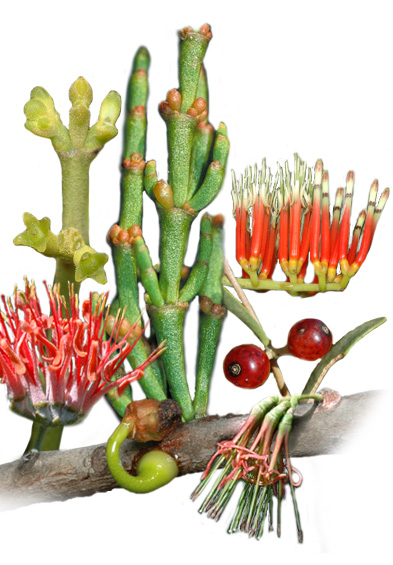 |
 |
|
The mistletoe is most popularly known through its place in ancient legends and mythology, and its widespread use in folk medicine. To the naturalist, however, its fascination stems from its unusual life history and its interactions with other plants and animals. To the biologist, in recent years, it has become a useful tool in research, and studies of mistletoe have contributed in a variety of ways to our knowledge of plant evolution. Research on mistletoes has furthered understanding of the origins of southern hemisphere vegetation, the evolution of mimicry in plants, the development of sexual differentiation or dioecy in plants, and of course the biology of parasitism. |
||
What is a mistletoe?Dispersal and GerminationHow did some mistletoes get to remote islands?Mistletoes as food plants for ButterfliesDo mistletoes show cryptic mimicry of their hosts?Epiparasitism - mistletoes on mistletoesMistletoes of Australia and the World: Evolutionary OriginMistletoes and Southern Hemisphere BiogeographyEvolution of Dioecy in ViscumTaxonomyMistletoe in Folk Legend and MedicineMistletoe Checklist showing host genera, with illustrations |
 |
|
![An Australian Government Initiative [logo]](/images/austgovt_brown_90px.gif)







